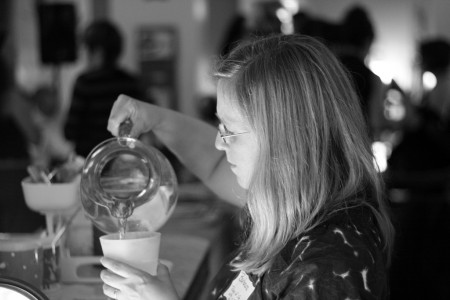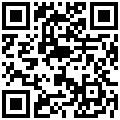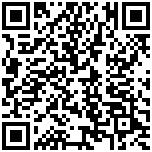Since the E71 is my first smartphone, I am inevitably responding to both the general medium and the specific device. So far, my experience has been mixed. The phone doesn’t do anything as well as a real computer does – obviously – nor as well as I was hoping when I purchased it. While usable, the keyboard is awkward. The OS is a bit finicky and annoying. The web browser lacks capability and fluidity of use, and even voice calls seem to be of a worse quality than on my cheap old Nokia 6275i.
All that being said, the E71 has the considerable advantage that it puts the internet into a form that fits in a pocket and can be accessed from anywhere. The email and messaging features are those I use and appreciate most, with web browsing and maps following next. The media features are very basic, and I never use them. Coupled with a bluetooth keyboard, the phone is extremely capable for email, texting, and instant messaging. Even without, you can maintain one conversation at a reasonable pace, without needing to strain yourself excessively. Another feature that is surprisingly good is the speakerphone, which can be used quite effectively while cooking or sitting at a desk. The battery life is also good: enough to cover about eight hours of very active internet use. The built-in email app is ok, but limited. Annoyingly, the installable GMail application is only a bit more capable. It cannot, for instance, apply labels to messages. As such, they clutter up my inbox instead of being slotted away into appropriate places. Managing multiple streams of emails is far less intuitive with this interface than with GMail’s excellent online version (not fully usable with the E71 browser). Thankfully, Microsoft’s Mail for Exchange application allows perfect syncing of contacts and calendar items between GMail and the native Nokia apps. Never mind the oddity of using Microsoft software to help Nokia hardware and Google software work well together.
My specific complaints about the E71 include:
- Annoyingly often, you need to tell the phone to connect to the internet, then using what protocol. For me, the answer is always ‘yes’ and the network is WiFi if available, GPRS otherwise. I dearly wish I could just lock those choices into the whole OS, rather than being forced to enter them literally every five minutes of use.
- The keyboard is annoyingly small, though that comes part and parcel with a device smaller than an iPhone.
- Copying and pasting requires an acrobatic manoeuvre: pressing three keys simultaneously, releasing, and then pressing three more.
- The web browser doesn’t work with a lot of the menus at the back end of WordPress and can be very finicky about posting comments. It also has a viewpoint that lurches around violently as new portions of pages get loaded: super annoying if you are filling in a number of fields.
- Even with a WordPress-specific app, the phone is not adequate for posting to the blog. For instance, it cannot interact with the WordPress media library, so as to include images in posts.
- The device won’t download the full content of even small text-only emails. Each time you open one, it goes to a ‘retrieving’ screen that lasts 5-20 seconds.
- Unlocking the keypad requires pressing two small keys in order. A dedicated lock switch would be better.
- The camera is rotten, and the video recording is even worse.
- Bluetooth connections go idle after an absurdly short period of time: maybe 60 seconds. There is no option to alter this.
- There is no way to use the built-in read LED as a flashlight, as you can on the 6275i.
- It lacks the super-useful automatic calling card dialler from the 6275i.
- The voice quality isn’t great. If often sounds a bit like a VoIP phone without enough bandwidth.
- Both applications and the whole OS crash pretty often, even when you are running programs one at a time. Sometimes, the only way to resolve it is to turn off the device and turn it back on.
- For some reason, my unlocked E71 can only find a handful of applications in Nokia’s ‘Download!’ area.
Given how well reviewed the E71 is among smartphones, I can only guess that others have even bigger problems. I will admit to wondering whether the iPhone would have been a better choice. For web browsing and media, I would say ‘certainly yes’ since the demo iPhones I have tried are enormously better than the Nokia in both regards. In terms of messaging – which is my number one use – I still think that even a cramped physical keyboard is better than no keyboard at all.
At this stage, about two weeks in, I am less impressed than I expected to be with both smartphones and the E71. That said, it is a useful thing to have when computers are not readily available, and I may grow more accustomed to it as more time passes. One thing I mean to try but haven’t yet is tethering it with my G4 iBook.








